10 Best SaaS Security Tools Every CISO Should Evaluate [2025]

In my experience with CISOs and SaaS security teams, I’ve seen cloud adoption fuel productivity, but it also exposes new security risks. Data from the 2024 State of SaaS security report shows that visibility gaps, insider risks, and compliance challenges rapidly exceed what perimeter-based tools can manage. This is why CISOs are shifting to SaaS-native platforms designed for continuous monitoring, contextual risk analysis, and automated controls.
Top 10 SaaS Security Tools for CISOs in 2025
SaaS security in 2025 goes beyond checklists. CISOs need assurance that tools address shadow SaaS, risky integrations, insider activity, and compliance gaps. The 10 platforms below stand out for their documented capabilities and pricing, giving security leaders a clear starting point for evaluation:
1. Reco
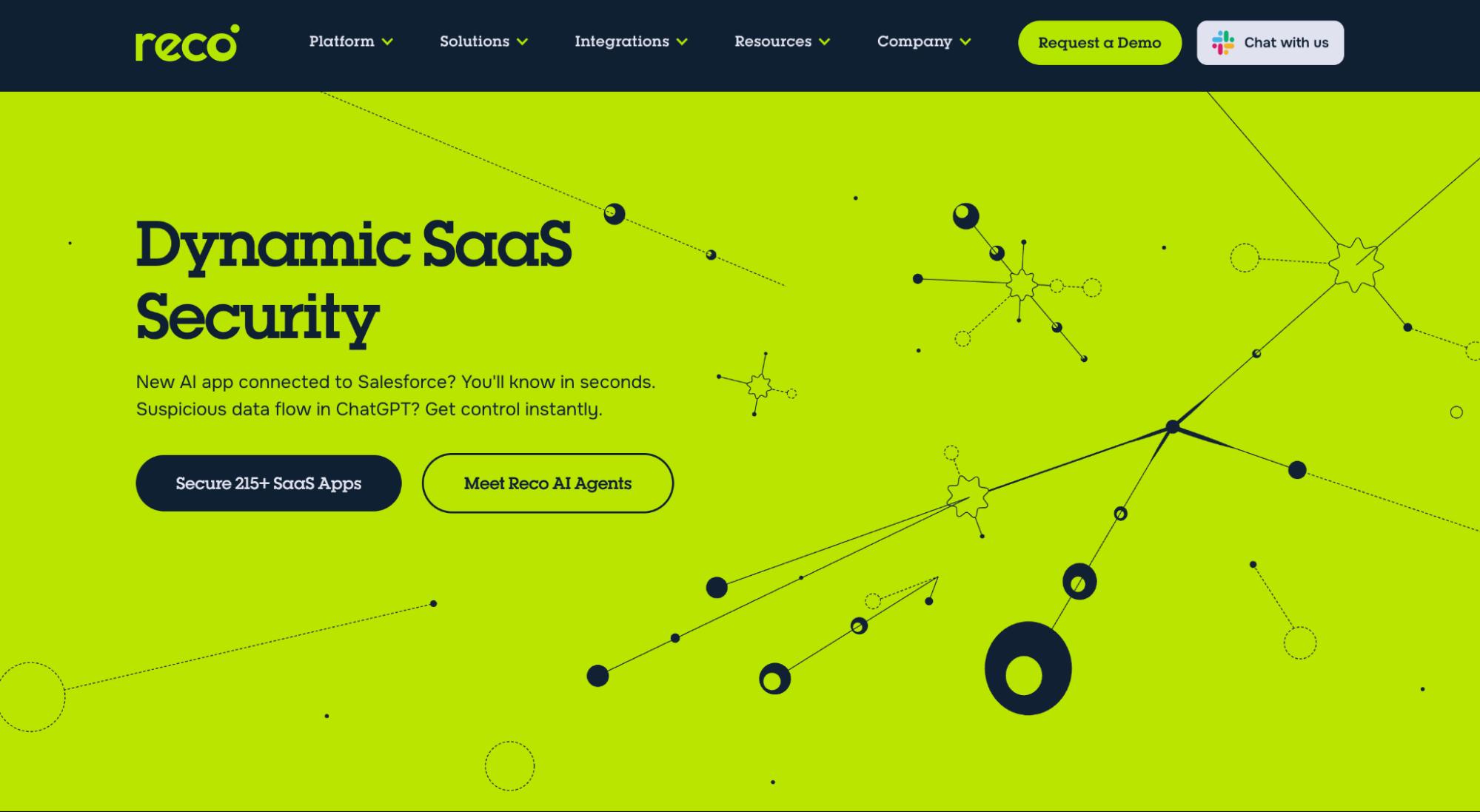
Reco is a dynamic SaaS Security platform built for how enterprises actually adopt applications. It discovers sanctioned, unsanctioned, and AI-driven SaaS, maps SaaS-to-SaaS and identity relationships, and aligns security posture with compliance. This gives CISOs real-time visibility into data flow and risk hotspots, turning blind spots into actionable insights without slowing adoption.
Key use case: Continuous discovery of SaaS and connections with posture and compliance controls.
Pricing: Quote-based on users and the number of integrations, offered directly and through the AWS Marketplace.
2. Palo Alto Networks SaaS Security
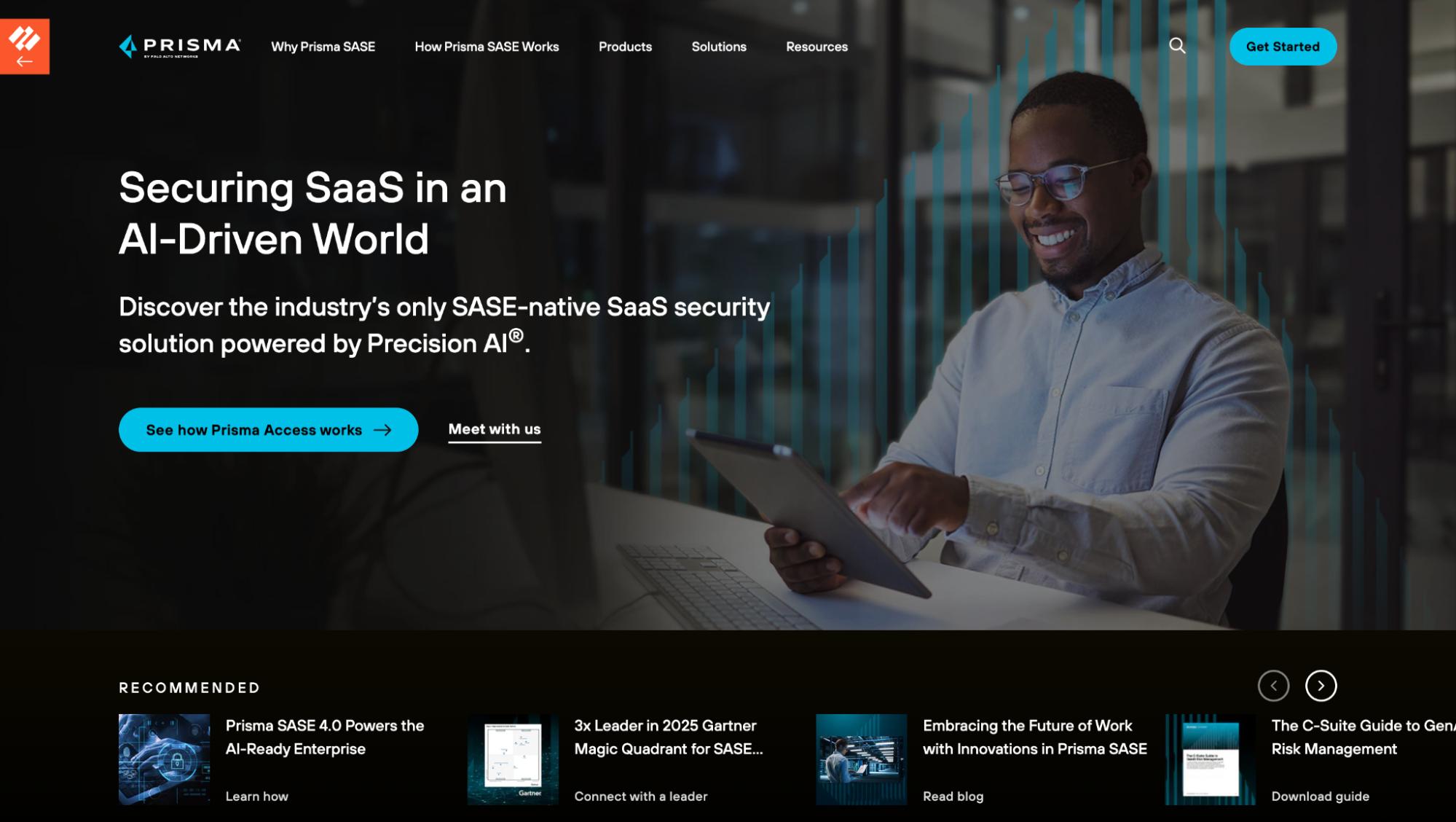
Palo Alto’s SaaS Security combines inline enforcement, API-based scanning, and SSPM. It protects both sanctioned and unsanctioned apps while continuously checking configuration posture. The platform unifies SaaS visibility with policy enforcement, supporting organizations already invested in Palo Alto’s ecosystem.
Key use case: Apply inline and API controls across SaaS while continuously checking configuration posture and compliance.
Pricing: Not publicly listed. Contact Palo Alto Networks for details.
3. Netskope SSPM
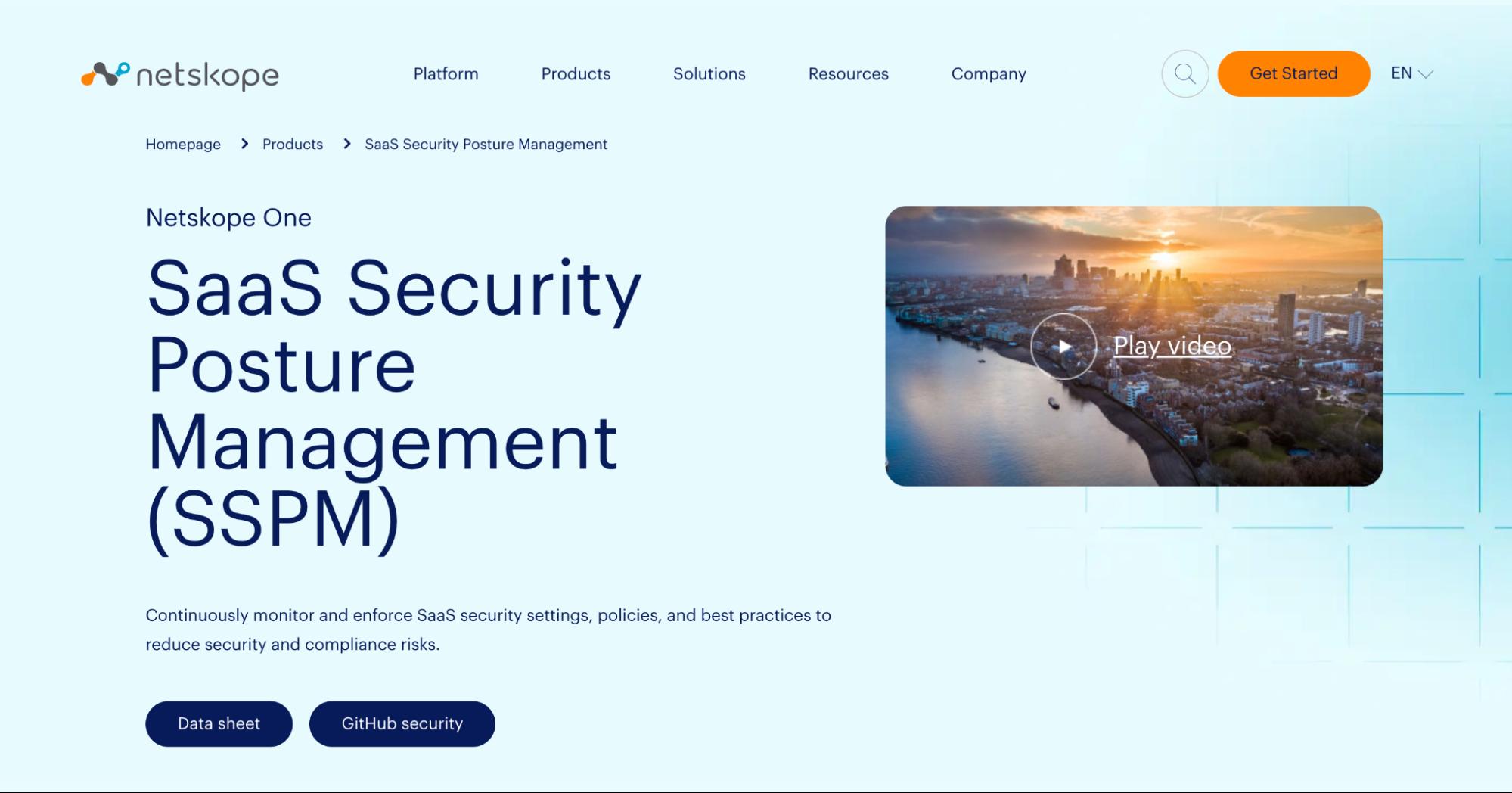
Netskope SSPM benchmarks SaaS configurations against standards such as CIS and NIST. It identifies misconfigurations, risky integrations, and compliance gaps while integrating with the broader Netskope Security Cloud. For CISOs, this means posture data and actionable recommendations centralized in a single platform.
Key use case: Conducting ongoing configuration assessments and compliance checks across SaaS apps.
Pricing: Not publicly listed. Contact Netskope for details.
4. Obsidian Security
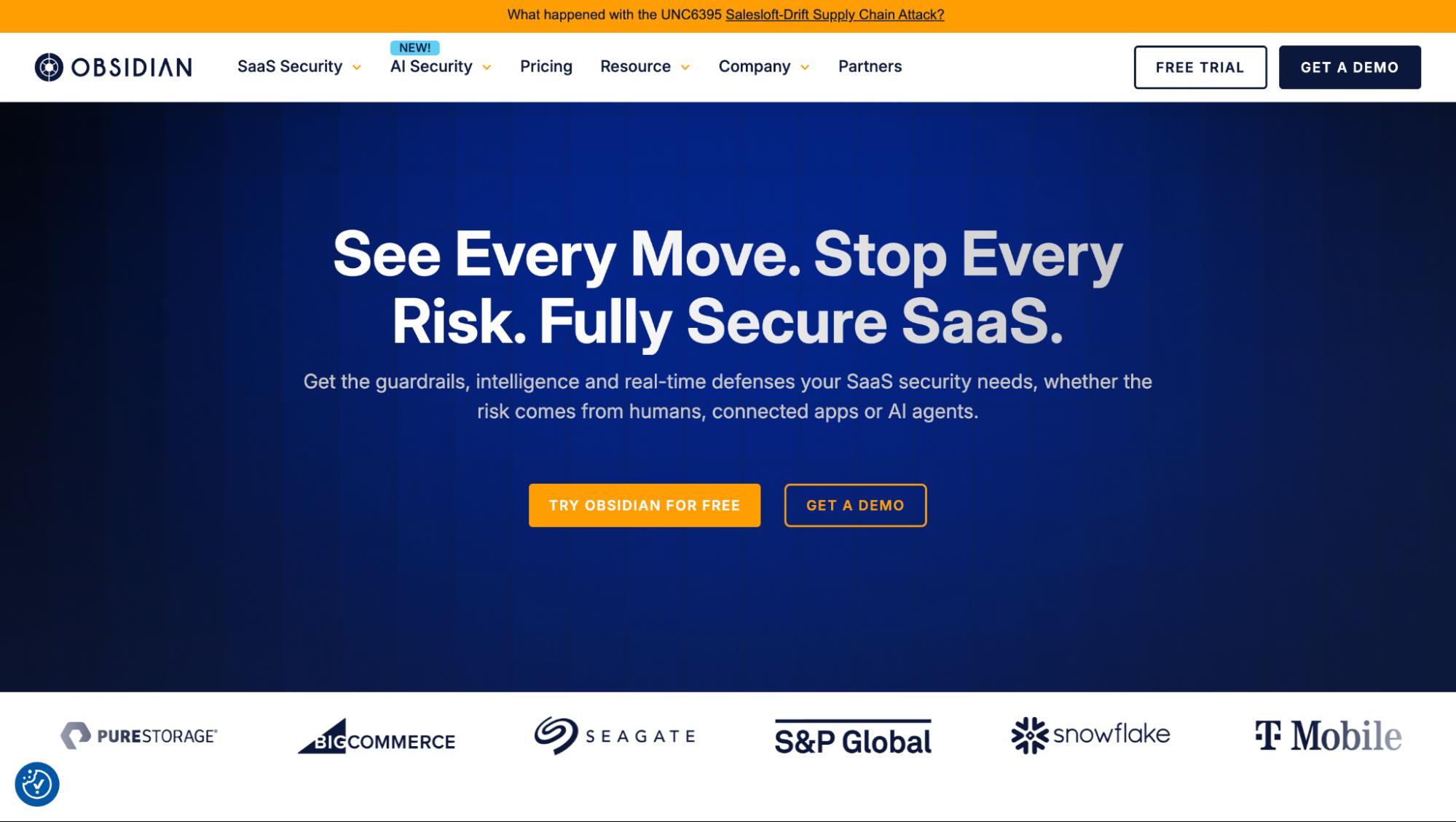
Obsidian focuses on protecting core SaaS like Microsoft 365, Salesforce, and Google Workspace. Correlating identity behavior with application activity helps detect account compromise, insider misuse, and risky settings early. Its monitoring also supports compliance with frameworks such as SOC 2 and ISO 27001.
Key use case: Centralized SaaS visibility with detections and compliance support across core apps.
Pricing: USD 100 per user per year on AWS Marketplace listing. They also offer custom pricing, and basic visibility is free for small teams, as per their website.
5. AppOmni
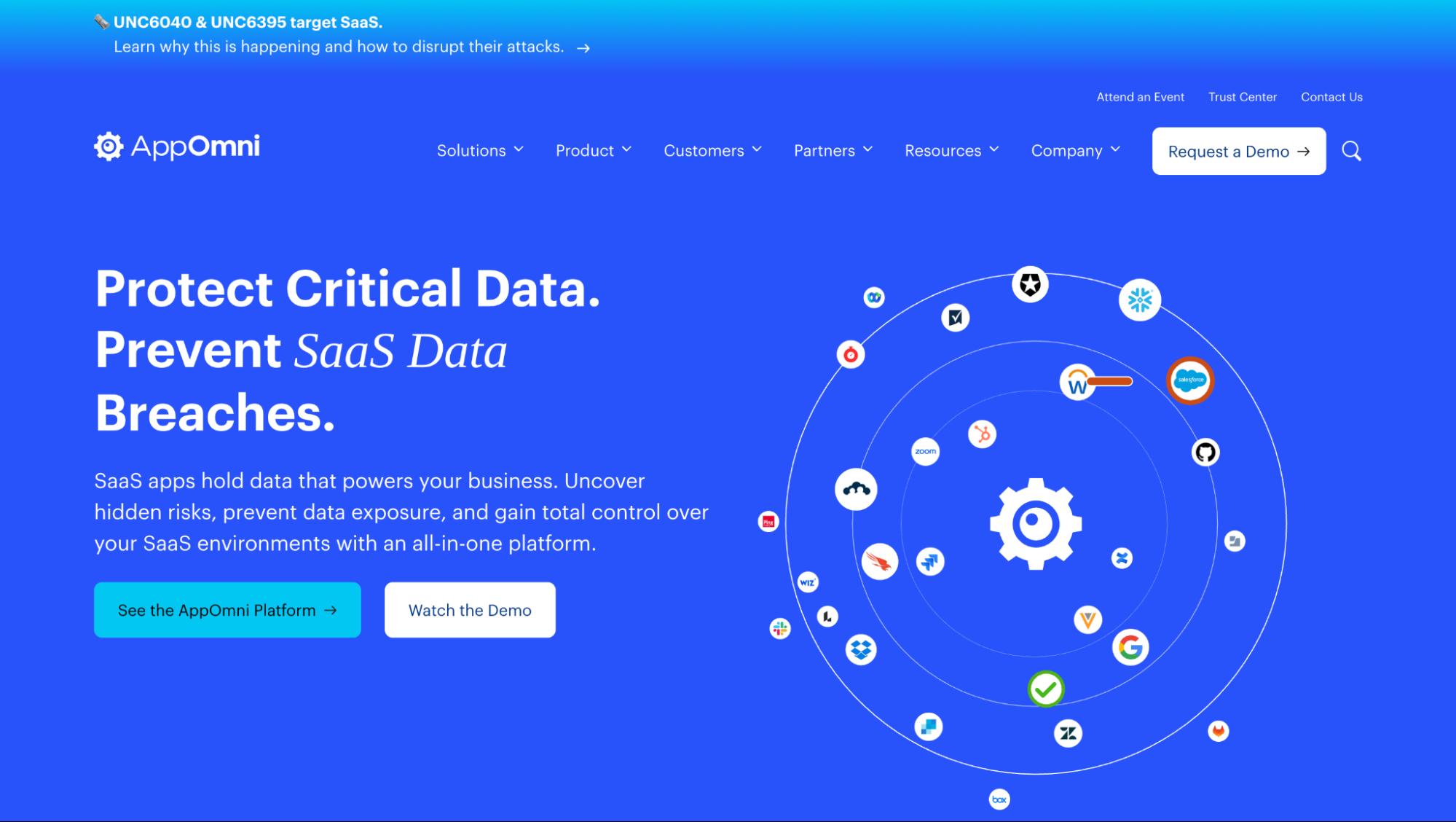
AppOmni offers posture management across major SaaS platforms, including Salesforce, Microsoft 365, and Google Workspace. It monitors security settings, identity configurations, and third-party integrations to prevent exposure of sensitive data. CISOs gain detailed insights and guided remediation to secure critical SaaS deployments.
Key use case: Reduce data exposure by monitoring configurations, identity settings, and third-party connections in supported SaaS.
Pricing: USD 7,500 per 100 users per SaaS on a 12-month contract via AWS Marketplace.
6. Valence Security
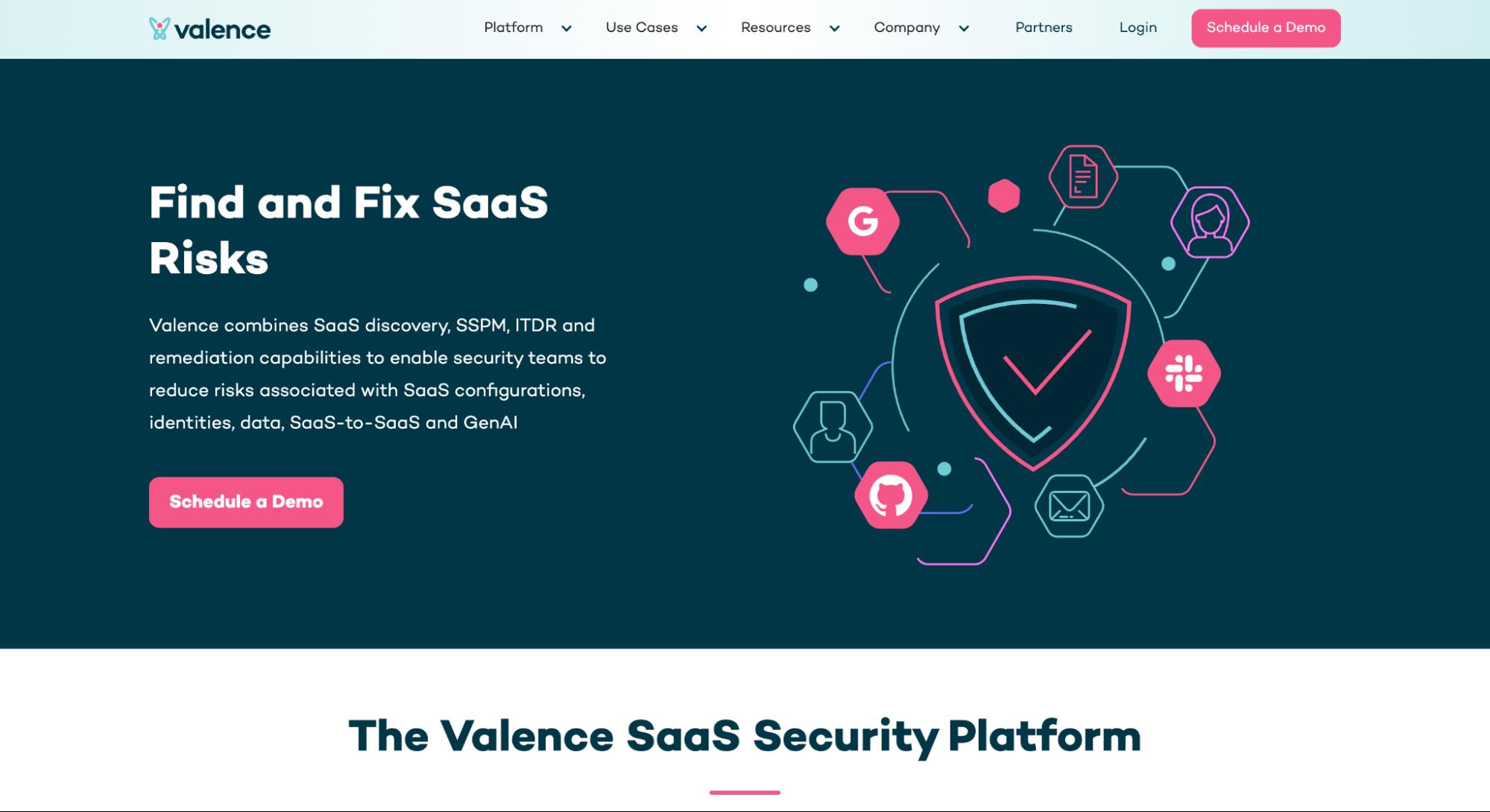
Valence combines discovery, posture management, identity threat detection, and automated remediation in one platform. It highlights risks from SaaS-to-SaaS connections, misconfigurations, and sensitive data exposure, while also extending visibility to GenAI applications. Guided workflows help security teams address issues at scale.
Key use case: Identify and remediate risks from configurations, identities, data, and integrations across SaaS.
Pricing: Not publicly listed. Engage via demo or marketplace listing.
7. Zscaler Advanced SSPM
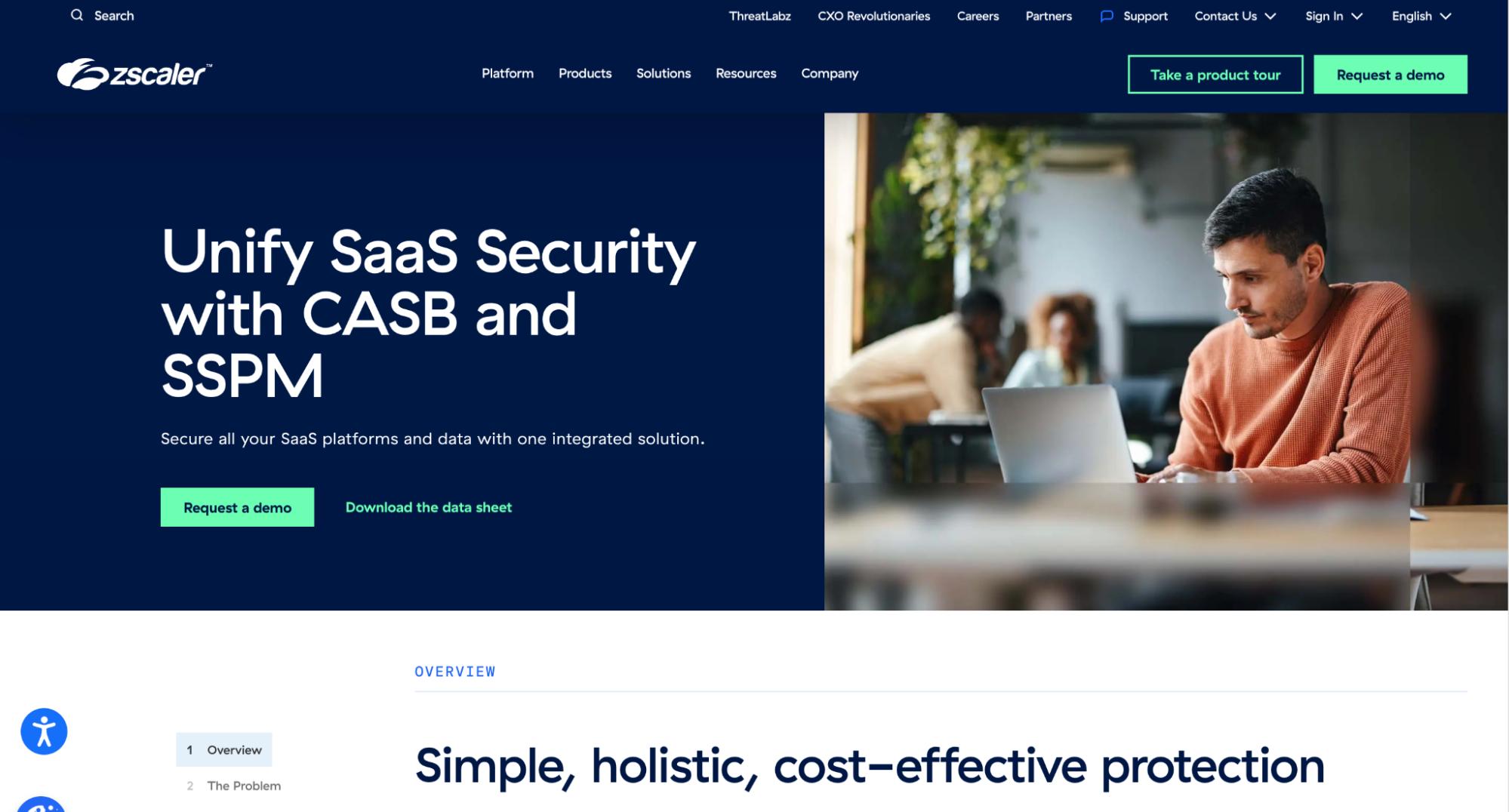
Zscaler integrates SaaS posture management into its Zero Trust Exchange. It continuously scans configurations, identifies risky or dormant integrations, and applies governance through its CASB and DLP stack. This allows CISOs to manage SaaS posture and data policies from a centralized platform.
Key use case: Scan SaaS instances for posture issues and govern data with centralized controls inside Zscaler.
Pricing: Zscaler publishes bundle and product information, with purchasing through sales and marketplaces. A general pricing and plans page is available.
8. DoControl
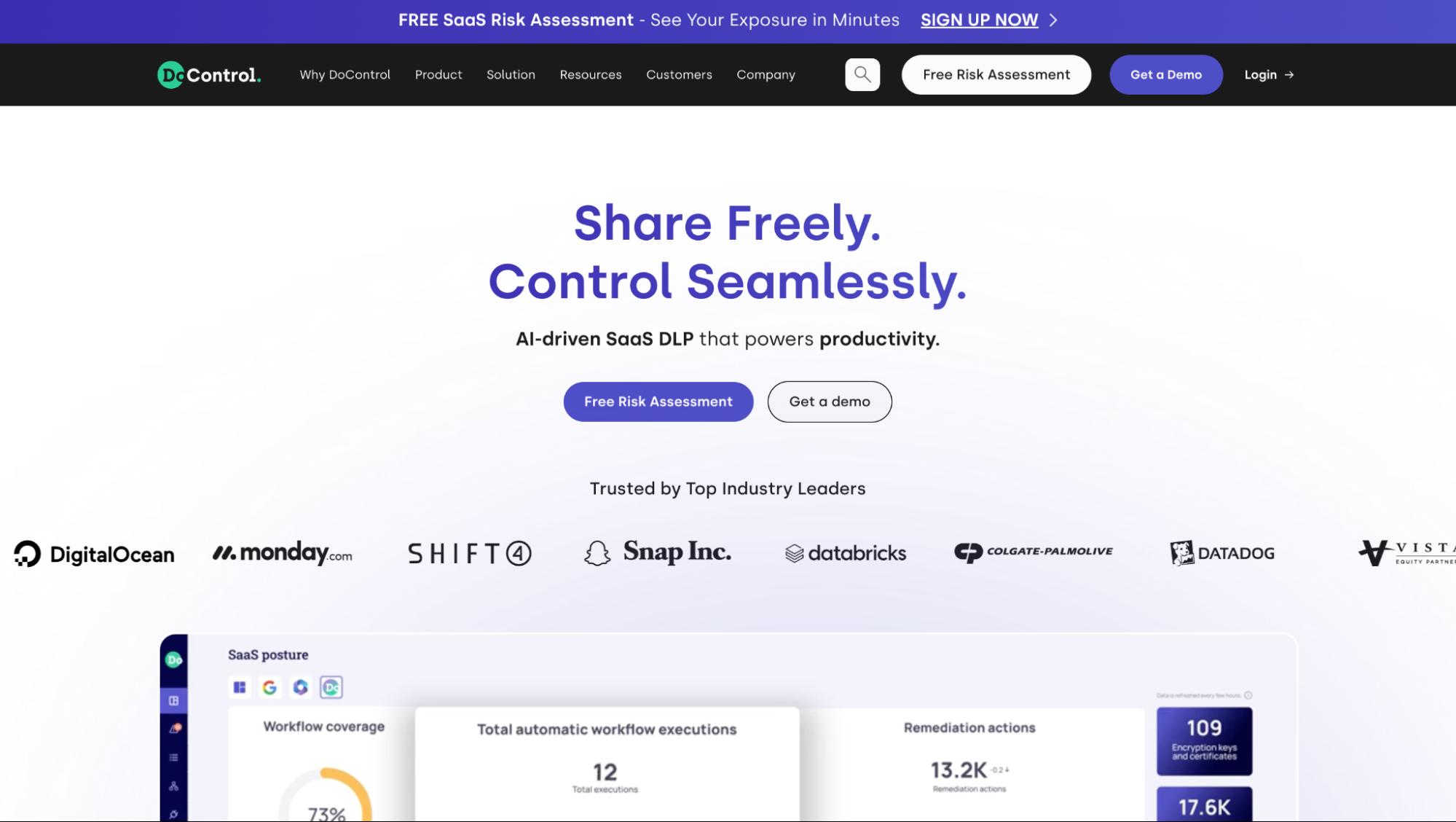
DoControl emphasizes SaaS data access governance. It provides granular visibility into file sharing and automates remediation through no-code workflows. Security teams can enforce policies while involving end users directly, striking a balance between collaboration and control.
Key use case: Enforce and automate file sharing and access policies across SaaS with workflow-driven remediation.
Pricing: Contract based on AWS Marketplace listing.
9. Grip Security
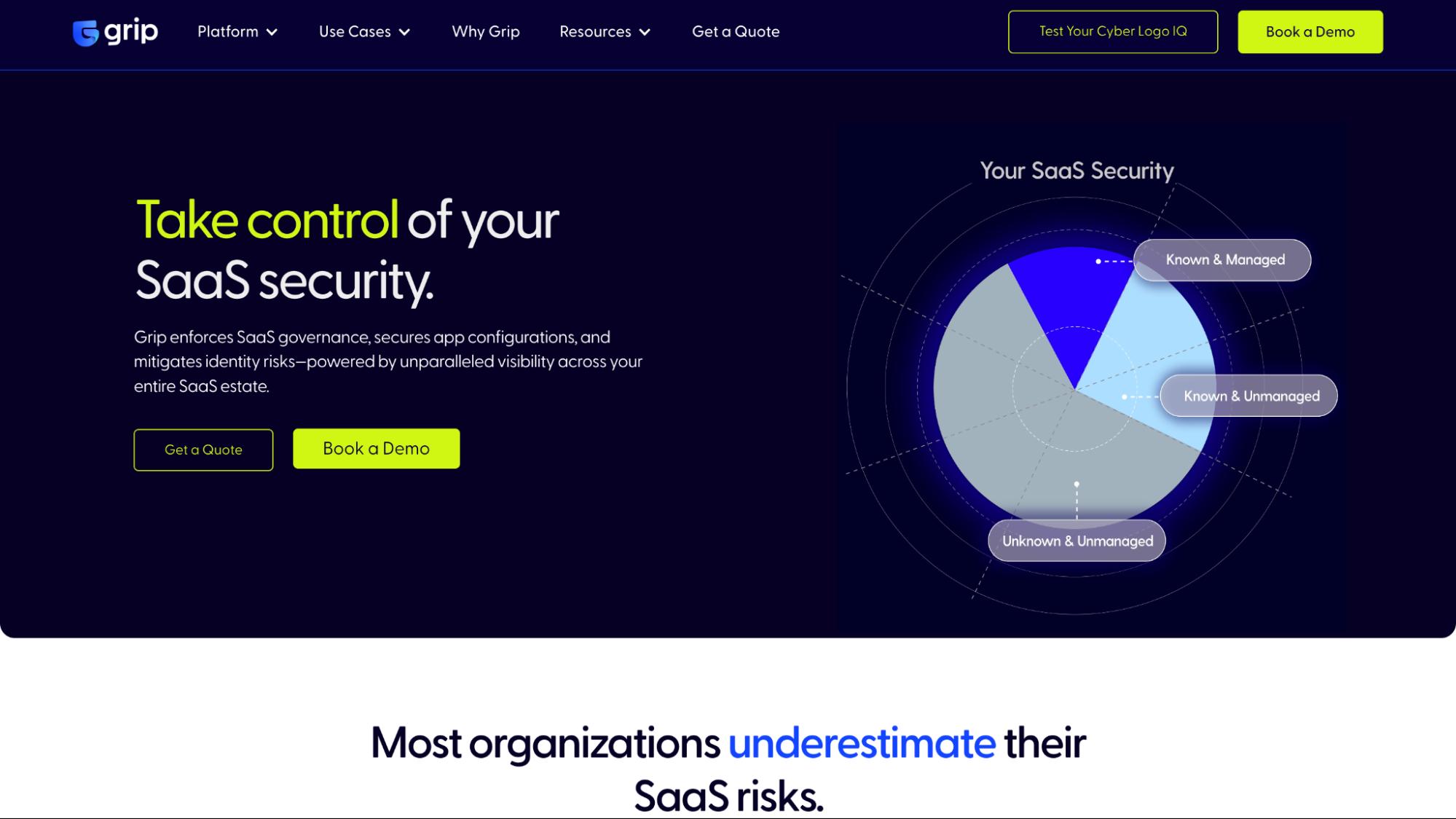
Grip is an identity-centric platform that uncovers shadow SaaS and unmanaged accounts across business apps. It reduces risks tied to abandoned or high-privilege accounts while giving CISOs control over SaaS and web application identities. The focus is on account-level governance without disrupting user adoption.
Key use case: Discover and reduce identity-related risk across SaaS and web apps with controls centered on accounts and permissions.
Pricing: Custom quote on site. Marketplace indicates private offer pricing.
10. Nudge Security
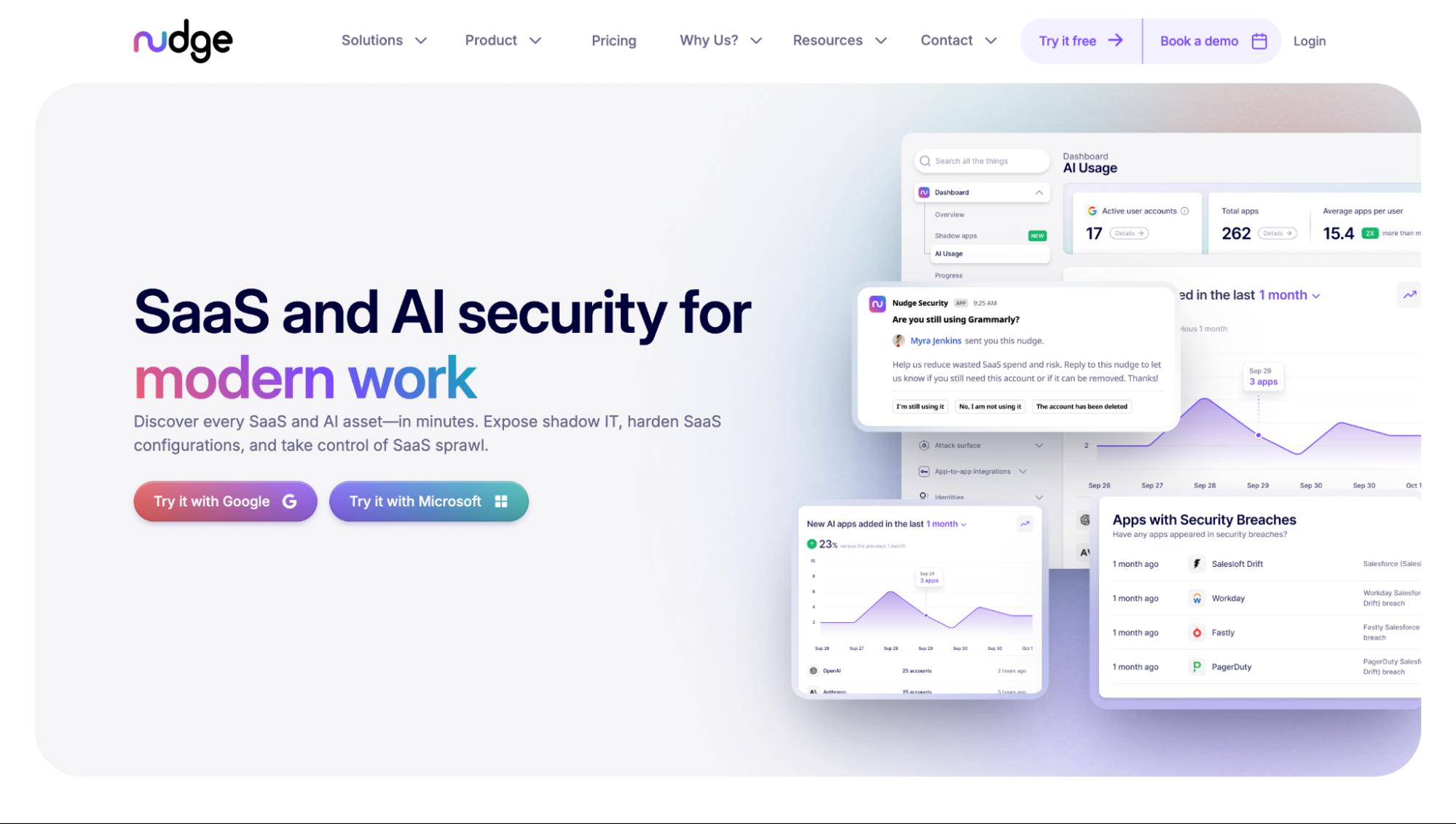
Nudge Security maps SaaS usage across the enterprise, showing which tools employees adopt and how accounts are used. It helps CISOs manage shadow SaaS and apply governance policies aligned with real adoption patterns. The approach emphasizes visibility and user-centric governance.
Key use case: Discover and manage SaaS adoption enterprise-wide, with insights shaped by account activity.
Pricing: USD 5/month per active user for teams with 150–2,500 accounts; flat USD 750/month for fewer than 150 accounts.
SaaS Security Tools Comparison Matrix
CISOs need more than feature lists. They must compare deployment models, coverage, and compliance side by side. The table below brings the 10 tools into a single view and helps security leaders align capabilities with business needs and risk priorities:
Essential SaaS Security Features Every CISO Needs
Comparing platforms only matters if CISOs know which features truly separate the leaders from the slowcoaches. Based on real-world evaluations, the capabilities below define what a modern SaaS security tool must deliver:
- Unified View of SaaS Risk Across Business Units: A single dashboard should combine risks across departments, allowing CISOs to see overlapping usage, redundant applications, and identity conflicts in one place.
- Deep Visibility Into Human-to-SaaS and SaaS-to-SaaS Interactions: Tools must surface both user activity and SaaS-to-SaaS connections through OAuth, APIs, and AI apps that bypass traditional controls.
- Contextual Risk Scoring for Identities, Apps, and Activities: Effective platforms rank alerts by data sensitivity, account privileges, and behavior history so CISOs can focus on the most urgent threats.
- Insider Threat Detection With Behavioral Analytics: Behavioral analytics highlights unusual patterns such as mass downloads, privilege escalations, or abnormal logins, even when credentials are valid.
- Automated Remediation and Playbook-Driven Responses: Workflows and playbooks should enforce fixes for misconfigurations, revoke risky integrations, and reduce response times from hours or days to minutes.
- Data Exposure Controls for Sensitive and Regulated Information: Fine-grained policies must detect and restrict exposure of PCI, HIPAA, or GDPR-covered data to align with compliance requirements.
- Audit-Ready Reporting for Security and Compliance Teams: Exportable reports on posture, identity, and activity make it easier for CISOs to prove compliance during audits.
- Future-Proofing for AI, GenAI, and Emerging SaaS Platforms: Coverage should extend to AI-driven and generative AI applications, where hidden costs can create unexpected risks. By preparing for these challenges alongside evolving SaaS ecosystems, organizations can stay resilient and avoid being caught off guard.
For deeper strategies, security leaders can explore the CISO guide to AI security, which details how to adapt governance models for emerging technologies.
How CISOs Should Evaluate SaaS Security Tools
Selecting the right SaaS security platform requires more than checking off feature boxes. CISOs need a structured approach that balances business priorities, technical realities, and the organization’s risk profile. The following evaluation criteria can help guide decision-making:
1. Mapping SaaS Security to Business Continuity and Risk Appetite
SaaS adoption directly impacts business operations, which means security must be tied to continuity planning. A tool should align with the organization’s defined risk appetite, ensuring that the protections it offers can withstand disruptions without overburdening business processes.
2. Evaluating Vendor Ecosystem Fit and Integration Complexity
No SaaS security platform operates in isolation. CISOs should assess how easily a tool integrates with existing identity providers, SIEMs, and cloud security stacks. Solutions that require complex custom integrations may slow adoption and reduce overall value.
3. Measuring Security ROI Beyond Traditional Metrics
ROI in SaaS security isn’t just about cost reduction. CISOs should look at how a platform improves detection times, reduces misconfigurations, prevents data exposure, and streamlines compliance reporting. These operational outcomes often prove more valuable than hard savings.
4. Building Insider Threat Readiness Into SaaS Security Strategy
Insider activity - intentional or accidental - remains one of the hardest risks to address. Tools with strong behavioral analytics and identity correlation allow teams to detect anomalies early, creating a proactive stance against account compromise and misuse.
5. Ensuring Vendor Transparency and Shared Responsibility Models
SaaS security is built on trust. Vendors should provide clear documentation about how responsibilities are divided between the platform and the customer, including coverage for SaaS-to-SaaS integrations and AI tools. Transparency is non-negotiable in reducing blind spots. When evaluating an SSPM vendor, CISOs should also confirm how posture checks and integration coverage are updated to reflect evolving compliance and identity risks.
6. Preparing for Rapid SaaS Adoption and Decentralized IT Growth
Shadow IT and department-driven SaaS purchases will only accelerate. Platforms should be able to scale quickly to cover new applications without lengthy onboarding. CISOs should prioritize solutions that can adapt to decentralized adoption without losing visibility or control.
Actionable SaaS Security Tips for CISOs
While tools provide the foundation, CISOs also need practical strategies to keep SaaS risk under control. The following best practices can make a measurable difference:
- Enforce strong identity controls with multi-factor authentication and least privilege access across all SaaS applications.
- Continuously monitor SaaS-to-SaaS integrations and OAuth connections to detect risky third-party access before it spreads.
- Establish automated playbooks for common misconfigurations and access violations to reduce response times.
- Engage business units directly by promoting security awareness and involving employees in remediation when appropriate.
- Regularly review compliance alignment to ensure SaaS usage meets evolving regulatory frameworks such as GDPR, HIPAA, or PCI.

Conclusion
SaaS adoption is only accelerating, bringing layers of complexity that CISOs can no longer afford to overlook. The right SaaS security tools offer more than visibility. They enable continuous discovery, contextual risk analysis, insider threat detection, and compliance alignment that scale with business growth. By evaluating vendors against these essential capabilities and applying best practices, CISOs can strengthen their organization’s SaaS posture while maintaining productivity. The result is a strategy that balances innovation with control and ensures SaaS platforms remain an asset rather than an unchecked risk.
How do SaaS security tools address insider threats differently from traditional DLP solutions?
Traditional DLP is designed to stop data from leaving the organization, but it often misses subtle internal risks. SaaS security tools add identity and behavioral context, making it possible to detect threats even when valid credentials are used.
- Spot unusual download spikes, mass sharing events, or logins from abnormal locations.
- Highlight privilege escalations that may indicate misuse of access.
- Correlate behavior across multiple SaaS apps to surface hidden insider risks.
What challenges do CISOs face in monitoring SaaS-to-SaaS connections and OAuth risks?
SaaS-to-SaaS integrations are convenient but create significant blind spots. OAuth tokens in particular can introduce persistent and often over-permissive access.
- Employees frequently approve integrations without IT review.
- OAuth scopes may allow far broader access than intended.
- Revoking or monitoring these connections is often manual and inconsistent.
How does Reco help CISOs gain visibility into shadow SaaS usage across the enterprise?
Reco continuously discovers sanctioned, unsanctioned, and AI-driven SaaS applications.
- It maps SaaS-to-SaaS connections and identity relationships, giving CISOs a unified view of shadow SaaS that was previously invisible.
- This visibility allows teams to prioritize risks and take action before issues escalate.
Learn more in the CISO guide to SaaS security.
What role does AI play in modern SaaS security tools, and how can CISOs prepare for it?
AI is now central to SaaS security, from anomaly detection to contextual risk scoring. At the same time, the rise of GenAI applications introduces new risks around data exposure. CISOs should prioritize tools that extend coverage to AI-driven applications while also applying AI techniques to insider threat detection and risk analysis.
How should CISOs evaluate ROI when investing in SaaS security tools?
The return on SaaS security investments goes beyond breach prevention. CISOs should measure reductions in detection and remediation times, the value of audit-ready reporting, and the business continuity benefits of avoiding SaaS outages. These factors, combined, help security leaders demonstrate tangible value to the board.



















.svg)

